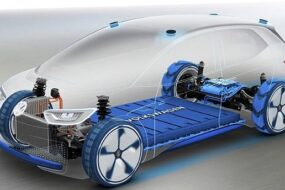The Most Importance of Surface Finish in Additive Manufacturing Process
The Most Importance of Surface Finish in Additive Manufacturing Process – Added substance fabricating (AM) is making progress quickly and is presently being utilized to create many ensured aviation parts. Starting worries with thickness, porosity and grain structure have now been to a great extent survive.
AM parts presently have microstructures proportional to produced segments, reasonable for the most requesting auxiliary applications exposed to high cyclic loadings. A significant driver for aviation parts is weight decrease, with administrators ready to pay a premium for the diminished working costs that originate from more noteworthy efficiency.
AM parts have more refined grain structures than cast segments, equivalent with created segments. Another huge exhibition advantage of AM parts is the capacity to accurately control inner math to make cooling channels and warmth exchangers with highlights, for example, turbulators which increment heat move.
The Most Importance of Surface Finish in Additive Manufacturing Process- An uncertain test for AM is surface completion. Parts subject to weariness must be completely machined or go through some other surface alteration, for example, shot peening, to empower examination. The extra cycles include cost yet more essentially this keeps the full advantages of AM from being figured it out. In principle, AM gives finished opportunity to make complex shapes, for example, those created by geography streamlining. By and by, surface completion prerequisites frequently forestall this. On the off chance that surface machining is required, at that point similar constraints on structure apply with respect to some other machined part. Whenever shot peening is utilized then impediments are set on meager and thin structures which might be defenseless against this cycle.
Two AM measures are settled: Powder bed combination (PBF) in which a laser or electron bar is engaged to liquefy and intertwine districts of powdered material contained in a powder bed; and wire took care of coordinated vitality affidavit (DED) in which a plasma curve liquefies a wire feedstock as it is taken care of into the dissolve pool utilizing innovation firmly identified with welding. The two cycles produce completely thick parts with excellent microstructures like manufactured segments.
PBF can deliver fine highlights with generally very much controlled surfaces for littler parts. It accomplishes the best surface nature of any AM metal framework, with the surface complete the process of relying upon powder molecule size, commonly running from 5 to 60 µm. A scope of metal composites appropriate for aviation segments are accessible just as great polymers. Fabricate volume is as of now restricted to 400 mm × 400 mm × 800 mm by the need to keep up a steady gas stream over the assemble region to guarantee adequate quality just as the necessity for the bed to be totally loaded up with overwhelming and costly metal powder. Statement rates are roughly 5–20 cm3/h for a solitary laser. Multi laser frameworks are at present ready to accomplish roughly 150cm3 in the quickest materials, for example, aluminum and around 30cm3 to 50cm3 in Nickel compounds Lasers are precisely guided utilizing mirrors implying that various lasers are required to keep up numerous soften pools. Last surface completion is ordinarily gotten by shot peening with machining just required for basic interfaces. The principle weaknesses of PBF are the moderate affidavit rate and restricted size.

Wire took care of DED empowers far higher statement rates and essentially boundless segment size, yet least element size is a few mm and the as-kept surface completion is unpleasant. The enormous dissolve pool brings about weld-dot formed stores which are typically machined to accomplish the necessary dimensional exactness and surface completion. Machining includes critical expense and implies that attainable structures are restricted to those which can be machined.

Defect Detection for Additive Manufactured Components
A basic part of value control for AM segments is the location of inside imperfections. Blemishes and deformities in AM metal parts incorporate absence of combination, cold lap, porosity, voids and splitting. Cold lap is an absence of combination brought about by an oxide layer or flimsy film. Porosity is regular in intertwined material and might be brought about by gases entangled inside the liquefy pool, keyhole breakdown or combination abandons. Various causes can bring about various shapes with various break proliferation conduct.
During AM, just the last layer combined can be watched. In any case, when further layers are saved over the top, the current layer may re-dissolve causing further entrance and the conclusion of obvious deformities. Albeit ruinous testing gives a conclusive assessment of inner imperfections, this is just reasonable for measure arrangement or examining in high-volume manufacturing. Non-damaging tests (NDT) incorporate color penetrant review, release testing, radiographic testing (RT), processed tomography (CT), and confirmation testing. RT utilizes x-beams or gamma-beams to see the inner structure of parts. It is generally used to investigate welds in pipelines, pressure vessels and other basic applications. It can in some cases distinguish absence of combination surrenders. CT utilizes various sectional pictures, gotten by X-beam or attractive reverberation imaging (MRI), to see the three-dimensional inward structure. Absence of combinations is particularly trying for CT because of their little volume.
Surface unpleasantness of as stored AM parts is an issue for some NDT methods, including color penetrant review and CT. This implies surfaces frequently should be machined before NDT can dependably be performed.
Surface Finish in Additive Manufacturing
PBF segments have as-stored surfaces comprised of incompletely combined powder. The affidavit layers may likewise be noticeable, regardless of the way that surface unpleasantness estimations are no higher when profiles are taken over the layers than when brought a solitary layer. The surface relies upon powder molecule size, soften boundaries, layer thickness and the direction of surfaces comparative with the construct plate. Surface unpleasantness makes examination troublesome and may likewise diminish execution by giving split commencement destinations. This diminishes exhaustion obstruction and crack sturdiness. Albeit surface completion is proceeding to improve, surface machining or shot peening are regularly expected to improve surface completion. Notwithstanding, interior surfaces and some little highlights might be hard to complete thusly.
DED measures have as-stored surfaces comprised of obvious weld dots bringing about surface waviness of a few millimeters. This is because of huge dissolve pools, which are hard to control and control, brought about by bend or plasma pillars which can’t be engaged to not exactly a couple of millimeters. High affidavit rates imply that pressure alleviation heat treatment is regularly required and huge contortion may happen. Machining is, in this manner, required both to keep up dimensional precision and to improve surface completion.
Growing new strategies for getting worthy surface completion, and reviewing parts, will assist with broadening the advantages of added substance fabricating. Improved comprehension of cycle boundaries may lessen twisting and the need to machine surfaces. On the off chance that NDT procedures can be upgraded to permit dependable assessment on as-fabricated surfaces that will colossally enable the confirmation to measure and lessen the expenses of assembling. The subsequent stage might be the improvement of productive and dependable in-situ investigation methods. Since AM is a layer-by-layer measure, it permits in-situ examination opportunity in the middle of the layers. This can be exceptionally huge especially in the underlying turn of events and affirmations stages. There is additionally a need to grow better than ever strategies for achieving improved surface completion, which permits interior and fragile highlights to acquire great surface completion. For instance, grating stream machining is being created by Extrude Hone and electro-compound processing is being created by Dlyte. The point is to arrive at the necessary surface completion, on totally required surfaces, as requested by the application. Without this, geography streamlined parts can’t be examined for break commencement surrenders.

















No Comments